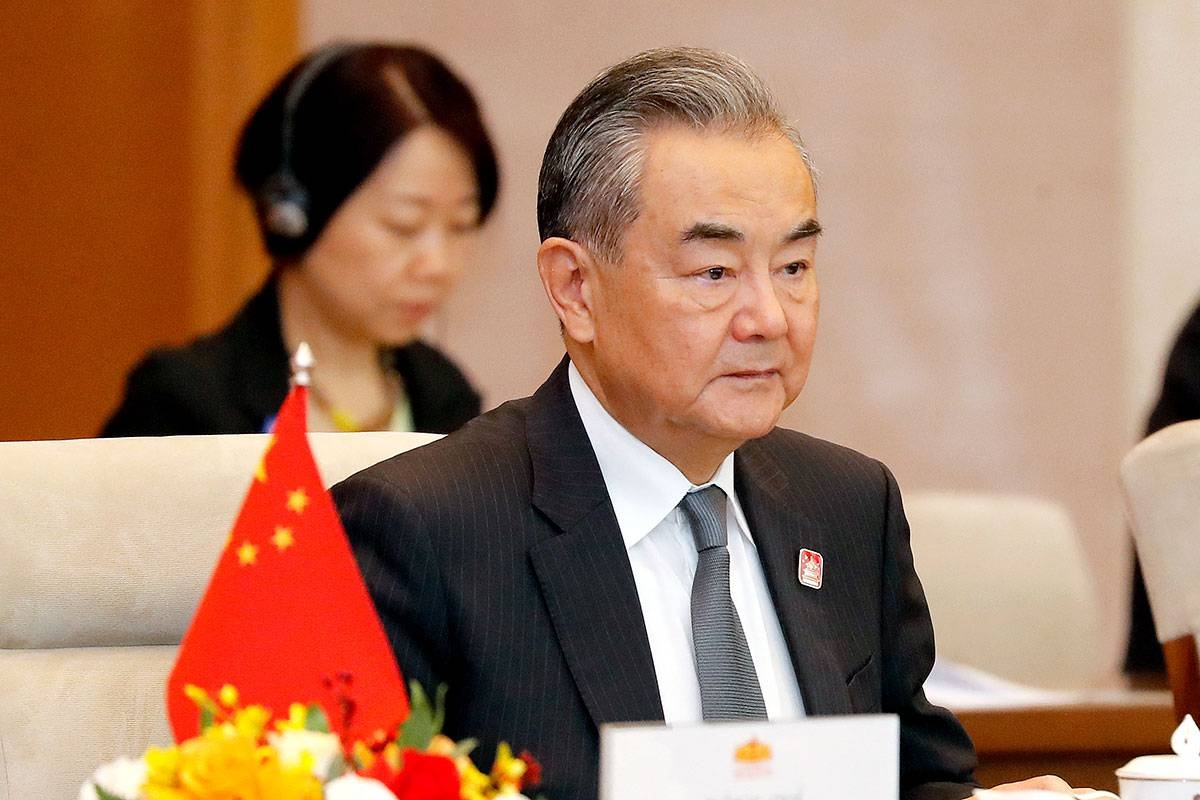China’s Foreign Minister Wang Yi has issued a warning to the Philippines, stating that the country will maintain military pressure amid a dispute over sovereignty in the South China Sea. This dispute could potentially involve US forces defending the Philippines, as they are a treaty partner of the United States.
During a phone conversation with Philippine Foreign Affairs Secretary Enrique Manalo, Wang emphasized that if the Philippines misjudges the situation, acts independently, or colludes with external forces to escalate tensions, China will defend its rights in accordance with the law and respond resolutely. These comments were reported by the official Xinhua News Agency.
China’s recent actions include mobilizing its coast guard and maritime militia to block Philippine supply missions aimed at supporting its soldiers and fishermen. China claims sovereignty over virtually the entire South China Sea, which has put it at odds with the Philippines, Vietnam, Malaysia, Taiwan, and Brunei, all of whom maintain claims over islands, reefs, and undersea resources in the region.
Wang’s remarks were particularly sharp, accusing the Philippines of changing its policy stance, reneging on promises, provoking troubles at sea, and undermining China’s legitimate and lawful rights. He stated that the bilateral relationship between China and the Philippines is at a crossroads, and the Philippine side must act with caution. Wang emphasized the importance of properly handling and managing the current maritime situation as a top priority.
The Department of Foreign Affairs (DFA) described the conversation as a “frank and candid exchange,” indicating that both sides have gained a clearer understanding of their respective positions on various issues.
Territorial disputes in the South China Sea have grown tenser as China seeks to solidify its territorial claims, defying the United States and its allies, including the Philippines, Japan, South Korea, and Taiwan. China claims Taiwan as a breakaway province and has threatened to annex it by military force.
China has accused the United States of encouraging the Philippines to provoke China for its own purposes, although it has not provided direct evidence to support this claim.
The Philippines has reported incidents where Chinese coast guard ships used water cannons and military-grade lasers that caused temporary blindness to Filipino crew members. They have also engaged in dangerous blocking and shadowing maneuvers that resulted in minor collisions.
The United States is bound by a 1951 treaty to help defend the Philippines from attack. This commitment has grown stronger with the election of President Ferdinand Marcos Jr., who recently stated that the situation in the South China Sea has become more dire as China expands its presence.
China has shown increased interest in atolls and shoals that are getting closer to the coast of the Philippines, with the nearest atoll being approximately 60 nautical miles away. President Marcos discussed the maritime territorial disputes with Chinese leader Xi Jinping during a meeting on the sidelines of an Asia-Pacific summit in San Francisco.
The Philippines summoned China’s envoy on December 11 and raised the possibility of expelling him following the latest clashes. Videos released by the Philippines documented incidents during resupply missions to fishermen at Scarborough Shoal and a garrison at Second Thomas Shoal.
Despite the tensions, President Marcos has stated that the Philippines will not give up its claims in the South China Sea. The situation remains complex and delicate, with both countries asserting their rights and interests in the region.







